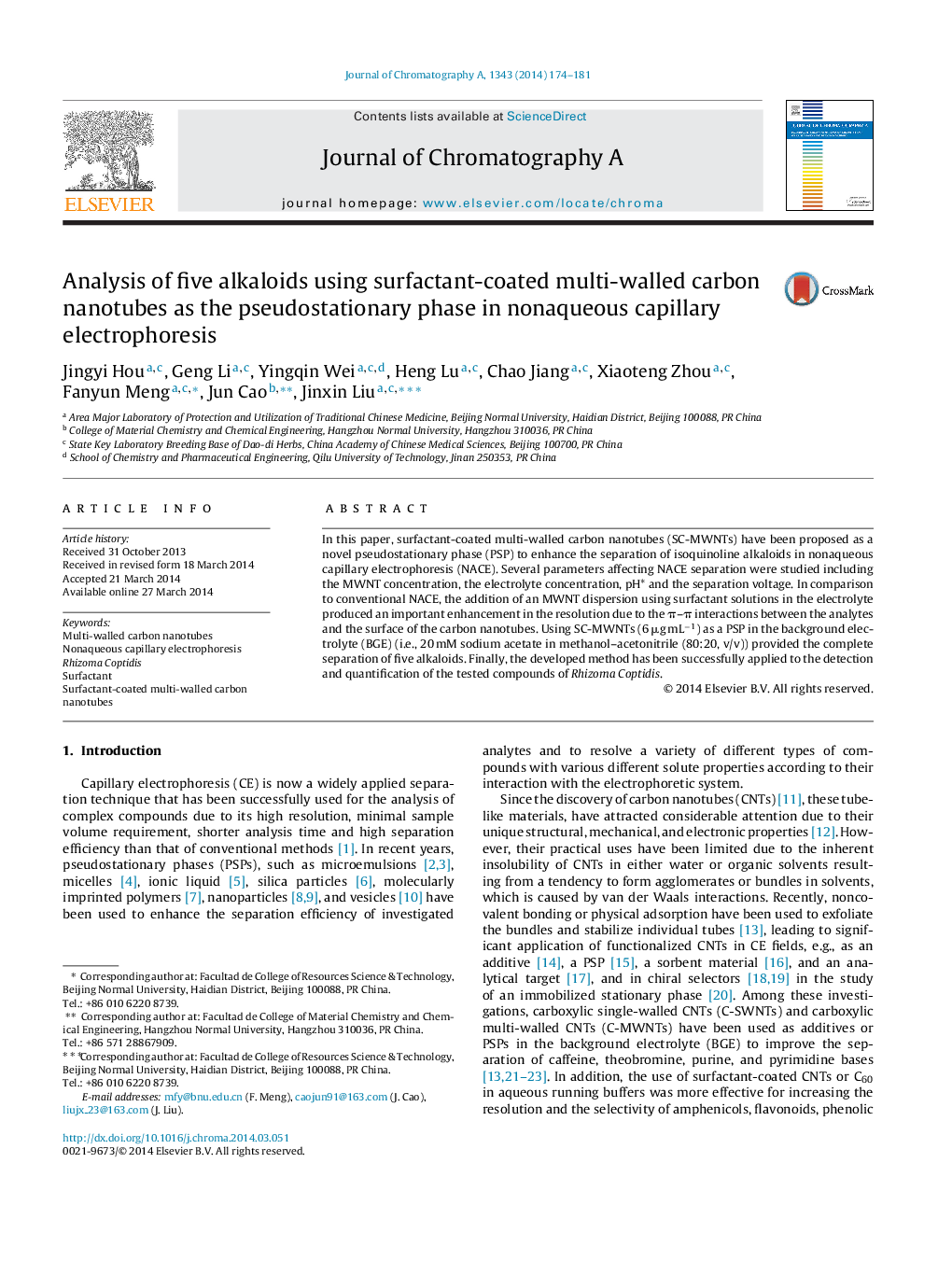| Article ID | Journal | Published Year | Pages | File Type |
|---|---|---|---|---|
| 1200064 | Journal of Chromatography A | 2014 | 8 Pages |
•A novel NACE system based on SC-MWNTs was reported.•The pseudostationary phase interacted favorably with analytes.•The effect of the MWNTs concentration, the electrolyte concentration, pH* and the separation voltage was investigated.•The method was then applied to a determination of the five compounds of Rhizoma Coptidis.
In this paper, surfactant-coated multi-walled carbon nanotubes (SC-MWNTs) have been proposed as a novel pseudostationary phase (PSP) to enhance the separation of isoquinoline alkaloids in nonaqueous capillary electrophoresis (NACE). Several parameters affecting NACE separation were studied including the MWNT concentration, the electrolyte concentration, pH* and the separation voltage. In comparison to conventional NACE, the addition of an MWNT dispersion using surfactant solutions in the electrolyte produced an important enhancement in the resolution due to the π–π interactions between the analytes and the surface of the carbon nanotubes. Using SC-MWNTs (6 μg mL−1) as a PSP in the background electrolyte (BGE) (i.e., 20 mM sodium acetate in methanol–acetonitrile (80:20, v/v)) provided the complete separation of five alkaloids. Finally, the developed method has been successfully applied to the detection and quantification of the tested compounds of Rhizoma Coptidis.
